
The Enchanting Wadi Shab: Oasis of Adventure and Serenity
Explore Wadi Shab in Oman: A Hidden Oasis Offering Hiking, Swimming, and Stunning Natural Beauty in the Heart of Oman's Rugged Landscape.
Wadi Shab, located in the Sultanate of Oman, is a breathtaking natural wonder that combines the thrill of adventure with the peace of untouched nature. Nestled in the eastern region of Oman, this oasis is a haven for hikers, swimmers, and nature lovers alike. The journey begins with a short boat ride across a tranquil river, followed by an exhilarating hike through rocky terrain and lush greenery. As you navigate the winding paths, you’ll encounter stunning views of turquoise pools and dramatic cliffs that seem to touch the sky. The highlight of Wadi Shab is undoubtedly its hidden waterfall, which requires a bit of swimming and scrambling to reach. Once there, the cool, refreshing waters offer a perfect respite from the heat, and the sight of the cascading waterfall is nothing short of magical. Along the way, you will find small caves and plenty of spots to relax and take in the serene surroundings. The wadi is also known for its diverse flora and fauna, making it a delightful spot for nature enthusiasts and photographers. Visiting Wadi Shab is like stepping into a different world where time slows down, and the beauty of nature takes center stage. It’s an ideal destination for those looking to escape the hustle and bustle of city life and immerse themselves in an awe-inspiring landscape. Whether you are looking for a challenging hike or a peaceful day surrounded by natural beauty, Wadi Shab offers a unique and unforgettable experience that showcases the best of Oman’s natural wonders.
Local tips in Wadi Shab
- Wear sturdy hiking shoes as the trail can be rocky and uneven.
- Bring plenty of water and snacks, as there are no facilities along the trail.
- Start your hike early in the morning to avoid the midday heat.
- Don’t forget to bring a waterproof bag for your valuables, as you’ll need to swim to reach the waterfall.
- Check the weather forecast before you go, as flash floods can occur in the wadi during heavy rains.
- If visiting during the weekend, be prepared for crowds as it is a popular spot among locals and tourists alike.
The Enchanting Wadi Shab: Oasis of Adventure and Serenity
Wadi Shab, located in the Sultanate of Oman, is a breathtaking natural wonder that combines the thrill of adventure with the peace of untouched nature. Nestled in the eastern region of Oman, this oasis is a haven for hikers, swimmers, and nature lovers alike. The journey begins with a short boat ride across a tranquil river, followed by an exhilarating hike through rocky terrain and lush greenery. As you navigate the winding paths, you’ll encounter stunning views of turquoise pools and dramatic cliffs that seem to touch the sky. The highlight of Wadi Shab is undoubtedly its hidden waterfall, which requires a bit of swimming and scrambling to reach. Once there, the cool, refreshing waters offer a perfect respite from the heat, and the sight of the cascading waterfall is nothing short of magical. Along the way, you will find small caves and plenty of spots to relax and take in the serene surroundings. The wadi is also known for its diverse flora and fauna, making it a delightful spot for nature enthusiasts and photographers. Visiting Wadi Shab is like stepping into a different world where time slows down, and the beauty of nature takes center stage. It’s an ideal destination for those looking to escape the hustle and bustle of city life and immerse themselves in an awe-inspiring landscape. Whether you are looking for a challenging hike or a peaceful day surrounded by natural beauty, Wadi Shab offers a unique and unforgettable experience that showcases the best of Oman’s natural wonders.
When is the best time to go to Wadi Shab?
Iconic landmarks you can’t miss
Bimmah Sinkhole
Explore the enchanting Bimmah Sinkhole, a stunning natural attraction in Oman with turquoise waters and breathtaking surroundings, perfect for adventure and relaxation.

Wadi Bani Khalid Pools & Cave
Explore the stunning natural pools and captivating caves of Wadi Bani Khalid, a must-visit oasis in Oman for adventure and relaxation.

Pebbles Beach
Experience the breathtaking beauty and tranquility of Pebbles Beach in Tiwi, Oman, a perfect escape for relaxation and marine adventures.

Water Fall Cave Shab
Explore the breathtaking Water Fall Cave Shab in Tiwi, Oman, where stunning waterfalls and lush landscapes create an unforgettable adventure.

Wadi Shab Resort
Discover tranquility and breathtaking natural beauty at Wadi Shab Resort, the perfect getaway in the heart of Oman.
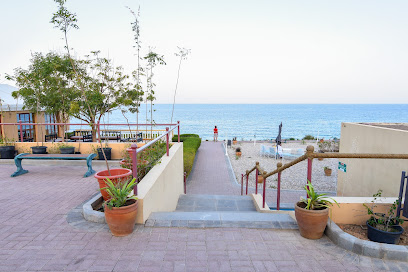
Tiwi Beach
Experience tranquility and stunning views at Tiwi Beach, a hidden gem along Oman's beautiful coastline, perfect for relaxation and adventure.

Wadi Mibam
Discover the stunning natural beauty and tranquility of Wadi Mibam, a hidden gem in Oman perfect for adventurers and nature lovers.
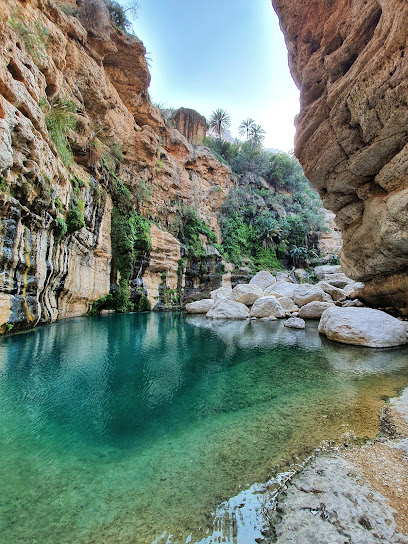
Wadi Tiwi
Explore the stunning natural beauty of Wadi Tiwi, a hidden gem in Oman featuring lush landscapes and crystal-clear waters, perfect for adventurers and nature lovers.

Wadi Shab First Pool
Explore the breathtaking Wadi Shab First Pool in Oman, a natural oasis of turquoise waters and stunning cliffs perfect for adventure and relaxation.

Majlis al Jinn | مجلس الجن
Discover the enchanting Majlis al Jinn, one of the world's largest cave chambers, nestled in the stunning Omani landscape, a must-visit for adventure seekers.

شلالات ميبام Mibam waterfall
Mibam Waterfall: Experience the breathtaking beauty of Oman’s natural treasure, where tranquility and adventure await in a stunning landscape.

بداية مسار المشي الى وادي ميبامWadi Tiwi
Discover the stunning landscapes and serene hiking trails of Wadi Tiwi, a natural wonder in Oman perfect for adventure seekers and nature lovers.

Pebble Beach
Experience the tranquility of Pebble Beach, a beautiful campground in Oman, perfect for nature lovers and adventure seekers alike.

Bibi Maryam Mausoleum | ضريح بيبي مريم
Explore the Bibi Maryam Mausoleum in Qalhat, Oman - a stunning blend of history, architecture, and breathtaking landscapes waiting to be discovered.

Tiwi Beach | شاطىء طيوي
Tiwi Beach in Oman: A tranquil paradise where golden sands meet azure waters, perfect for relaxation, adventure, and cultural experiences.

Unmissable attractions to see
Tiwi Beach | شاطىء طيوي
Explore the beauty of Tiwi Beach, Oman - a paradise of golden sands, azure waters, and rich cultural experiences in a serene coastal setting.

Wadi Shab Parking مواقف سيارات وادي شاب
Explore the stunning landscapes and tranquil waters of Wadi Shab, a natural gem in Oman perfect for adventure and relaxation.

نيابة طيوي
Discover the breathtaking landscapes and rich cultural heritage of Tiwi, Oman - a hidden gem along the southern coast.

Al salil view point
Discover the breathtaking beauty of Al Salil View Point in Oman, where stunning vistas and serene landscapes await every traveler.

فنس تخييم
Explore the stunning landscapes and rich cultural heritage of V6PF+CM in Qurayyat, Oman, a perfect destination for adventurers and culture enthusiasts alike.

Wadi Shab hike
Discover the stunning Wadi Shab hike in Oman, an adventure through dramatic landscapes and refreshing waters, perfect for nature lovers and thrill-seekers.

This famous house
Explore the stunning architectural heritage of Tiwi at this famous house, a must-visit tourist attraction rich in cultural significance and history.

Essential places to dine
Barbeque Nation Sur
Experience the vibrant flavors and delightful atmosphere at Barbeque Nation Sur, where every meal is a celebration of culinary excellence.

Raydan Restaurant مطعم ومطبخ ريدان
Discover the essence of Omani cuisine at Raydan Restaurant in Sur - where tradition meets flavor.

Golden Grill House
Experience the authentic taste of Oman at Golden Grill House – where tradition meets modern dining in Muscat.

Tiwi Restaurant, Arabic & Asian Food
Experience the best of Arabic and Asian cuisine at Tiwi Restaurant in Oman—where flavor meets tradition in a warm and inviting atmosphere.

Anwaar Tiwi Restaurant Arabic & Asian food's
Discover Anwaar Tiwi Restaurant: A Culinary Haven Offering Authentic Arabic & Asian Delights in the Heart of Oman.

Assayil Mazeera (Al Huty Restaurant)
Experience authentic Omani cuisine surrounded by breathtaking landscapes at Assayil Mazeera (Al Huty Restaurant) in Wadi Bani Khalid.

Mubarak Juma Mubarak Al Araimi Est. Restaurant
Experience the essence of Indian barbecue at Mubarak Juma Mubarak Al Araimi Est., where every meal tells a story of flavor and tradition.
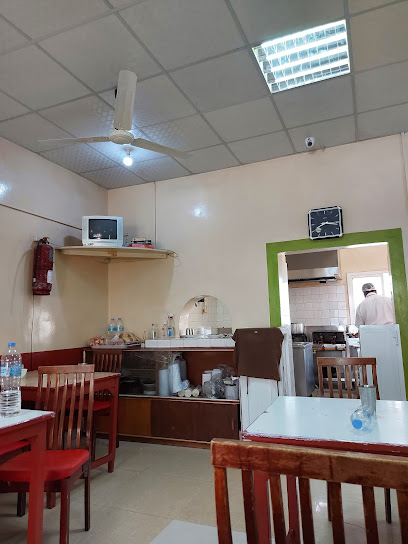
Naseer Bin Saeed Restaurant:імпорт пх
Discover authentic Omani cuisine at Naseer Bin Saeed Restaurant in Tiwi – a culinary delight amidst stunning landscapes.

Resturant
Discover authentic Omani flavors at this charming restaurant in Qurayyat, offering fresh ingredients and traditional recipes in a welcoming atmosphere.

closed for maintenance المطعم مغلق
Discover Wadi Bani Khalid's hidden gem: A delightful restaurant serving authentic Omani cuisine amidst breathtaking landscapes.

مطعم نسر وادي الشاب
Experience authentic Omani cuisine at مطعم نسر وادي الشاب in Muscat – where traditional flavors meet warm hospitality.

Al Nab'a Catering Services Sur Camp
Discover authentic Omani cuisine at Al Nab'a Catering Services Sur Camp - where every dish tells a story.

مقهى انجاز
Experience the best hamburgers at مقهى انجاز in Tiwi - where flavor meets hospitality in every bite.

Paaki Oman
Experience the rich culinary heritage of Pakistan at Paaki Oman, where every dish tells a story.

مطعم المكبوس العماني
Discover the rich flavors of Oman at مطعم المكبوس العماني in Wadi Bani Khalid - a culinary haven for every traveler.

Markets, malls and hidden boutiques
Wadi Shab
Explore Wadi Shab, Oman’s breathtaking gorge adorned with turquoise waters, lush landscapes, and thrilling adventures for every traveler.

اسواق المها
Discover the vibrant اسواق المها in Wadi Bani Khalid for an unforgettable shopping experience that blends tradition with modern retail.

Noor al Bawaraq Shopping Center
Experience the essence of shopping and local culture at Noor al Bawaraq Shopping Center in Wadi Bani Khalid, Oman.

طيوي الوطنية للمواد الغذائية
Discover the authentic flavors of Oman at طيوي الوطنية للمواد الغذائية, a vibrant grocery store in Tiwi offering local produce, spices, and treats.
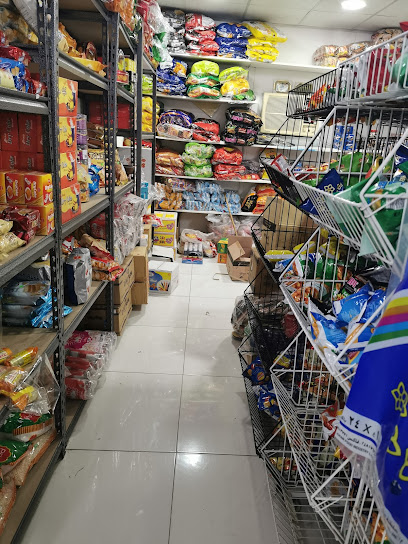
المدينة الحديثة للتجارة المتحدة
Explore Al-Madina Al-Haditha, a vibrant shopping mall in Qurayyat, Oman, offering diverse shops, dining, and a lively atmosphere for tourists.

أدوات الصيد
Discover the charm of Omani culture at أدوات الصيد, a vibrant shopping mall in Tiwi with unique crafts and local goods.

رزمة ورد
Explore رزمة ورد in Wadi Bani Khalid for unique Omani crafts and unforgettable souvenirs that beautifully reflect local culture.
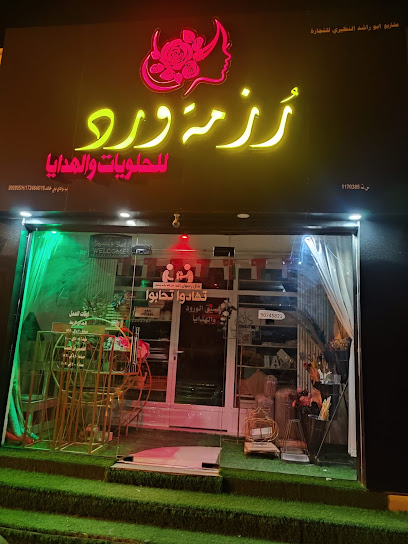
ابواحمدالخمىاسى للمتحده للتجارتهAbu Ahmad Al Khamayasi United Trade
Explore the charm of Abu Ahmad Al Khamayasi United Trade, a vibrant gift shop in Sur, Oman, offering authentic local handicrafts and souvenirs.

Oman Handicrafts
Explore the essence of Omani culture at Oman Handicrafts, where traditional artistry meets contemporary charm in every unique piece.

المدينة الحديثة للتجارة
Explore Tiwi's Modern City of Commerce for an authentic shopping experience featuring local produce, global brands, and a taste of Omani culture.

Grocery Shop بقالة
Explore the vibrant tastes of Asia at Tiwi's Asian Grocery Shop, where authentic ingredients and flavors await every culinary enthusiast.

Sale and Rent Lifajackets, Waterproof bags and shoes.
Discover high-quality swimwear essentials in Tiwi, from lifajackets to waterproof bags and shoes, ensuring a safe and stylish water adventure.

بوتيك رياحين الجنة
Discover the elegance of Boutique Riahain Al-Jannah in Sur, featuring exquisite bags, beauty products, dresses, perfumes, and watches for every taste.

Modern city of shop grocery
Explore the vibrant grocery store in Fins, Oman, where local flavors and fresh produce meet in a delightful shopping experience.

Md Mehedi Hasan fruits & vegetables Center Madayen Al Afia Al Shamla Trad. & Est.
Explore the vibrant Md Mehedi Hasan Fruits & Vegetables Center in Tiwi, Oman, for an authentic taste of local produce and culture.

Essential bars & hidden hideouts
Rock Bottom Cafe Muscat
Experience the vibrant atmosphere and delicious American cuisine at Rock Bottom Cafe in Muscat, where food and nightlife come alive.

Duke's
Experience the vibrant flavors of Muscat at Duke's, a premier gastropub in Crowne Plaza Hotel, where culinary excellence meets inviting ambiance.

Habana Sports Bar - Your Home of Sports
Experience the thrill of your favorite sports at Habana Sports Bar, where delicious cuisine and lively ambiance meet in Muscat's Grand Hyatt.

Al Ghazal Pub at InterContinental Muscat
Discover the ultimate sports bar experience at Al Ghazal Pub, where delicious food, refreshing drinks, and live games await in Muscat.

Turbine and Taps
Experience the vibrant nightlife of Muscat at Turbine and Taps, a trendy lounge offering eclectic drinks and a welcoming atmosphere.

Anwaar Tiwi Restaurant Arabic & Asian food's
Experience the vibrant fusion of Arabic and Asian cuisines at Anwaar Tiwi Restaurant, a culinary gem in the heart of Tiwi, Oman.
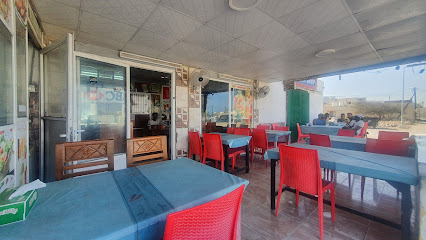
Piano Lounge at Shangri-La's Barr Al Jissah Resort & Spa
Experience the elegance of Piano Lounge at Shangri-La's Barr Al Jissah, where exquisite drinks and live music create an unforgettable atmosphere.
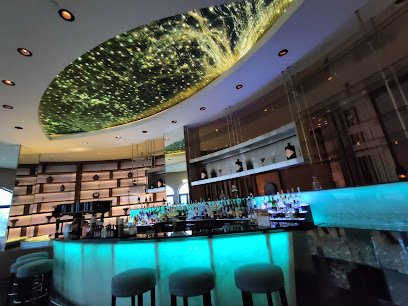
BLU Pool & Garden Bar
Experience the serenity of BLU Pool & Garden Bar at the Ritz-Carlton in Muscat, where luxury meets relaxation amidst lush gardens and a stunning pool.

John Barry
Experience a serene oasis at John Barry Lounge in Muscat, where luxurious ambiance meets exceptional international cuisine and cocktails.

مطعم نسر وادي الشاب
Experience the authentic taste of Oman at مطعم نسر وادي الشاب, a must-visit restaurant in Muscat offering traditional dishes in a welcoming atmosphere.
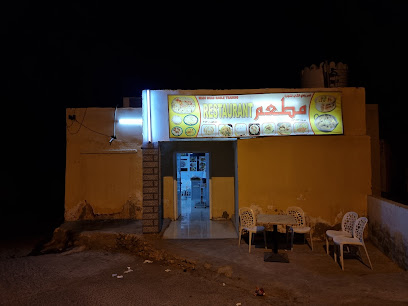
Wadi Bar
Experience the vibrant nightlife at Wadi Bar in Muscat, where exquisite cocktails and lively ambiance await every visitor.

Cleopatra Arabic Bar
Discover the lively Cleopatra Arabic Bar in Muscat for a taste of authentic Arabian cuisine and vibrant nightlife.

Friends Pool & Bar
Discover Friends Pool & Bar in Muscat: a vibrant bar with karaoke, fine wines, and a relaxing poolside atmosphere perfect for tourists.

B.A.B. Lounge
Discover the charm of B.A.B. Lounge in Bandar Jissah, where relaxation meets vibrant nightlife amidst picturesque seaside views.

استراحة دار الضباب
Discover tranquility at استراحة دار الضباب, a serene lounge in Qurayyat, Oman, perfect for relaxation and enjoying local refreshments.

Local Phrases about Wadi Shab
-
- Helloمرحبا
[marhaba] - Goodbyeوداعا
[wadaa] - Yesنعم
[naam] - Noلا
[laa] - Please/You're welcomeمن فضلك
[min fadlik] - Thank youشكرا
[shukran] - Excuse me/Sorryعذرا
[aadhara] - How are you?كيف حالك؟
[kayfa halik?] - Fine. And you?بخير. وأنت؟
[bukhayr. wa ant?] - Do you speak English?هل تتحدث الإنجليزية؟
[hal tatahadath al'injlizia?] - I don't understandلا أفهم
[laa afham]
- Helloمرحبا
-
- I'd like to see the menu, pleaseأريد أن أرى القائمة، من فضلك
[urid an ara alqaima, min fadlik] - I don't eat meatأنا لا آكل اللحوم
[ana la akl allahum] - Cheers!في صحتك!
[fi sahtak!] - I would like to pay, pleaseأريد أن أدفع، من فضلك
[urid an adfaa, min fadlik]
- I'd like to see the menu, pleaseأريد أن أرى القائمة، من فضلك
-
- Help!مساعدة!
[musa'adah!] - Go away!انصرف!
[insarf!] - Call the Police!اتصل بالشرطة!
[itasil bialshurta!] - Call a doctor!اتصل بطبيب!
[itasil bitabib!] - I'm lostلقد ضللت
[laqad dalalt] - I'm illأنا مريض
[ana maryid]
- Help!مساعدة!
-
- I'd like to buy...أريد أن أشتري...
[urid an ashtari...] - I'm just lookingأنا فقط أتطلع
[ana faqat attala] - How much is it?كم سعره؟
[kam siroh?] - That's too expensiveهذا غالي جدا
[hatha ghali jiddan] - Can you lower the price?هل يمكنك خفض السعر؟
[hal yumkinuk khafd alsir?]
- I'd like to buy...أريد أن أشتري...
-
- What time is it?كم الساعة؟
[kam alsaa'a?] - It's one o'clockالواحدة
[alwahida] - Half past (10)العاشرة والنصف
[al'ashirah walnisf] - Morningالصباح
[alsabah] - Afternoonبعد الظهر
[ba'd alduhur] - Eveningالمساء
[almasa] - Yesterdayأمس
[ams] - Todayاليوم
[alyawm] - Tomorrowغدا
[ghadan] - 1واحد
[wahid] - 2اثنان
[ithnan] - 3ثلاثة
[thalatha] - 4أربعة
[arba'a] - 5خمسة
[khamsa] - 6ستة
[sitta] - 7سبعة
[saba'a] - 8ثمانية
[thamania] - 9تسعة
[tasia] - 10عشرة
[ashara]
- What time is it?كم الساعة؟
-
- Where's a/the...?أين...
[ayn...] - What's the address?ما هو العنوان؟
[ma hu al'ainan?] - Can you show me (on the map)?هل يمكنك أن تريني (على الخريطة)؟
[hal yumkinuk an tarini (ala alkharyata)?] - When's the next (bus)?متى الحافلة التالية؟
[mata alhafilat altaliat?] - A ticket (to ....)تذكرة (إلى ...)
[tazkirat (ila ...)]
- Where's a/the...?أين...
History of Wadi Shab
-
Wadi Shab, nestled between the rugged cliffs of the Eastern Hajar Mountains, was historically part of the vast network of trade routes that crisscrossed the Arabian Peninsula. Merchants would traverse these routes, carrying precious goods like frankincense, myrrh, and spices from Oman to the Mediterranean and beyond. The strategic location of Wadi Shab made it a vital stopover point for traders seeking rest and replenishment.
-
The ingenious falaj irrigation systems, dating back over a thousand years, are a testament to the advanced hydrological engineering of the ancient Omanis. These channels, carved into the rock, transported water from the natural springs of Wadi Shab to the surrounding agricultural fields. The falaj systems not only provided a reliable source of water but also supported the flourishing date palm groves and other crops, sustaining local communities for centuries.
-
In the early 16th century, the Portuguese empire extended its reach to Oman, capturing key coastal cities like Muscat and Sohar. Although Wadi Shab was more inland, the region wasn't entirely devoid of Portuguese influence. The remnants of old watchtowers and fortifications in nearby areas remind visitors of the strategic military importance of controlling these valleys and protecting the inland trade routes from potential invaders.
-
Oman's rich maritime history is closely linked with its coastal and wadi regions. Wadi Shab, with its proximity to the Arabian Sea, played a role in the construction of traditional Omani wooden ships known as 'dhows'. Skilled craftsmen would source timber from the lush wadis and use it to build these sturdy vessels, which were essential for trade and fishing expeditions throughout the Indian Ocean.
-
The late 20th and early 21st centuries saw a renewed interest in Wadi Shab, not only from archeologists and historians but also from adventure-seeking tourists. The discovery of ancient artifacts and continued archaeological research have provided deeper insights into the region's past. Today, the blend of natural beauty and historical significance attracts visitors from around the world, making Wadi Shab a cornerstone of Oman's cultural heritage and tourism industry.
Wadi Shab Essentials
-
Wadi Shab is located approximately 140 kilometers southeast of Muscat, the capital of Oman. The most convenient way to reach Wadi Shab is by car. You can rent a car from Muscat and drive along the scenic coastal road (Route 17) towards Sur. The journey typically takes around 1.5 to 2 hours. Alternatively, you can hire a taxi or use a private tour operator that offers trips to Wadi Shab. Public buses are less frequent and may not drop you directly at the wadi, so a combination of bus and taxi might be required.
-
Once you arrive at Wadi Shab, the main mode of transportation to explore the area is on foot. The wadi features a well-defined hiking trail that takes you through the gorge and along the river. For those who prefer not to hike, you can hire a small boat to cross the initial water body, but walking is essential to fully experience the wadi. Wear comfortable hiking shoes and be prepared to wade through water at certain points.
-
The official currency in Oman is the Omani Rial (OMR). Credit cards are accepted in major cities and larger establishments, but it is advisable to carry cash when visiting Wadi Shab and other rural areas. There are no ATMs at Wadi Shab, so ensure you have sufficient cash before you leave Muscat or Sur. Small vendors and local shops mostly accept cash only.
-
Wadi Shab is generally a safe destination for tourists. However, it is important to take standard precautions. Avoid hiking alone and always inform someone of your plans. The area has no specific high-crime zones, but it is always best to stay vigilant and aware of your surroundings. Be cautious when hiking and swimming, as the terrain can be slippery and the water can be deep in some areas.
-
In case of an emergency, dial 9999 for immediate assistance in Oman. It is recommended to have travel insurance that covers medical emergencies and adventure activities. For minor health issues, carry a basic first-aid kit, as there are no medical facilities directly at Wadi Shab. The nearest hospitals and clinics are in Sur, about 40 kilometers away.
-
Fashion: Do dress modestly. Wear lightweight, breathable clothing, and comfortable hiking shoes. Avoid revealing clothing as Oman is a conservative country. Religion: Do respect local customs and traditions. Avoid public displays of affection. Public Transport: Do be courteous and give up your seat to elderly passengers. Don't expect frequent public transport to Wadi Shab. Greetings: Do greet people with a friendly 'As-Salamu Alaikum' (peace be upon you). A handshake is common among men, but avoid physical contact with the opposite gender. Eating & Drinking: Do try local delicacies if offered. Don't eat or drink in public during Ramadan.
-
To experience Wadi Shab like a local, visit early in the morning to avoid crowds and the midday heat. Engage with local guides who can offer insights into the history and geology of the wadi. Bring a waterproof camera or a dry bag to protect your belongings, as you will likely get wet during your hike. Don't miss the hidden cave with a waterfall at the end of the hike, which is a highlight for many visitors.
Trending Landmarks in Wadi Shab
-
Bimmah Sinkhole
-
Wadi Bani Khalid Pools & Cave
-
Pebbles Beach
-
Water Fall Cave Shab
-
Wadi Shab Resort
-
Tiwi Beach
-
Wadi Mibam
-
Wadi Tiwi
-
Wadi Shab First Pool
-
Majlis al Jinn | مجلس الجن
-
شلالات ميبام Mibam waterfall
-
بداية مسار المشي الى وادي ميبامWadi Tiwi
-
Pebble Beach
-
Bibi Maryam Mausoleum | ضريح بيبي مريم
-
Tiwi Beach | شاطىء طيوي
Nearby Cities to Wadi Shab
-
Things To Do in Muscat
-
Things To Do in Nizwa
-
Things To Do in Rustaq
-
Things To Do in Bahla
-
Things To Do in Ibri
-
Things To Do in Sohar
-
Things To Do in Al Ain
-
Things To Do in Fujairah
-
Things To Do in Khor Fakkan
-
Things To Do in Dibba Al-Fujairah
-
Things To Do in Ras Al Khaimah
-
Things To Do in Ajman
-
Things To Do in Sharjah
-
Things To Do in Khasab
-
Things To Do in Umm Al Quwain








